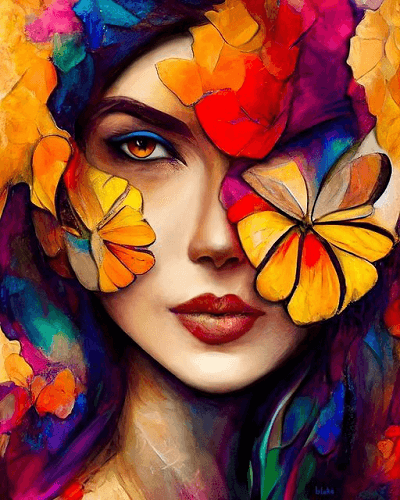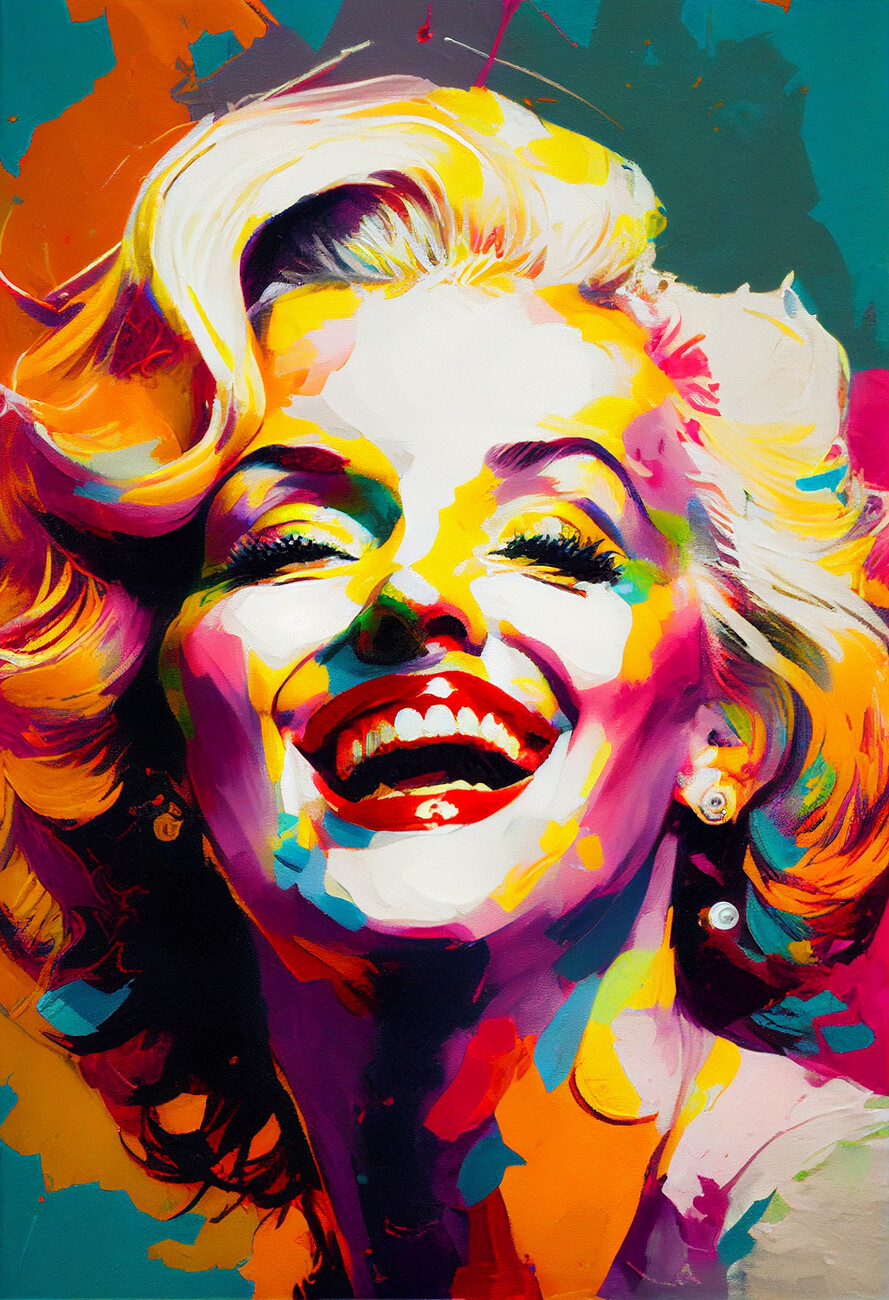Revealing one of the most Provocative Trump Art Parts of the Decade
Revealing one of the most Provocative Trump Art Parts of the Decade
Blog Article
Starting a Visual Trip Through the Lyrical Analyses of Nature in Impressionist Landscapes
Each brushstroke, each play of light and darkness, and each shade choice in their jobs speaks quantities about the musicians' deep link to nature and their ability to translate its charm onto the canvas. As we explore the lyrical interpretations of nature in Impressionist landscapes, we are welcomed to immerse ourselves in a world where reality and emotion link, providing a look into the musicians' extensive appreciation for the all-natural world.
The Exciting Brushstrokes of Claude Monet
Claude Monet's proficiency of brushstrokes transcends simple technique, imbuing his landscapes with an aerial quality that mesmerizes and astounds audiences - trump art. His innovative use color and light, integrated with his unique brushwork, produces a feeling of activity and life within his paintings. Monet's popular collection of works illustrating water lilies and his legendary haystacks display his capability to catch the short lived impacts of light and ambience

Taking On Light and Shadow With Camille Pissarro
Embodying a similar reverence for the interplay of light and shadow, Camille Pissarro's imaginative vision unravels as a harmonious exploration of the all-natural world's luminous subtleties. Pissarro, an essential number in the Impressionist motion, masterfully caught the dynamic connection in between light and shadow in his landscapes. His proficient use of color and brushwork enabled him to convey the refined changes in light that specify various times of day and periods.
Pissarro's paints frequently feature dappled sunshine infiltrating fallen leaves, casting complex patterns of light and darkness on the planet below. In jobs such as "Hoar Frost, the Effect of Snow, Pontoise," Pissarro skillfully portrays the crisp brightness of winter months sunlight compared with the trendy darkness that specify the snowy landscape. By accepting both light and shadow in his structures, Pissarro welcomes customers to immerse themselves in the natural elegance and transient effects of light on the planet around them.

With Pissarro's works, we are advised of the transformative power of light and shadow, welcoming us to stop and appreciate the fleeting moments of elegance present in the day-to-day landscapes that border us.
A Symphony of Color Styles by Edgar Degas
Edgar Degas coordinates a vibrant harmony of colors in his masterful artworks, instilling his structures with a dynamic interplay of colors that mesmerize the viewer's look. Understood primarily for his ballet dancers and intimate scenes of Parisian life, Degas skillfully adjusted shades to convey state of mind and movement in his paints. trump art. His use of vibrant, contrasting colors and refined tonal variants created a sense of deepness and vibrancy within his jobs
Degas' shade scheme usually included rich blues, deep environment-friendlies, and warm oranges, which he used with confident brushstrokes to catch the essence of his subjects. Whether portraying a ballerina mid-performance or a group of good friends speaking at a coffee shop, Degas' shades not just showed the scene however additionally stimulated a feeling of emotion and power.
Moreover, Degas' trial and error with light and darkness added an additional layer of complexity to his color compositions, boosting the overall environment of his paintings (trump art). Through his competent manipulation of shade, Degas produced a visual harmony that continues to reverberate he has a good point with customers today
Exploring Nature's Tranquility With Berthe Morisot
Berthe Morisot's imaginative vision provides a tranquil separation from the vivid shade symphonies of Edgar Degas, as she catches the serenity of nature in her evocative landscapes. Understood for her fragile brushwork and intimate portrayals of day-to-day life, Morisot's landscapes exude a feeling Learn More Here of tranquility and consistency.
Morisot's paints usually feature soft, low-key tones that communicate a feeling of calmness and calmness. Her works, such as "The Cradle" and "Summer season's Day," showcase her capability to capture the subtle elegance of nature in a method that is both relaxing and reflective to the customer.
Unlike several of her Impressionist counterparts that concentrated on vibrant colors and vibrant make-ups, Morisot liked to produce mild, reflective scenes that invite the visitor to mirror and pause. Via her masterful usage of light and darkness, Morisot develops a feeling of tranquility that resonates with the customer on a deep emotional level.
The Emotional Landscapes of Vincent Van Gogh
Vincent Van Gogh's landscapes strongly convey a deepness of feeling through their vibrant brushwork and meaningful use shade. The Dutch post-impressionist artist is renowned for his capability to capture raw and extreme emotions in his paints, transcending traditional representations browse around this web-site of nature. Van Gogh's tumultuous individual life, marked by psychological wellness struggles, substantially affected his art, instilling his landscapes with a feeling of unease, melancholy, or exuberance.
In jobs such as "Starry Night" and "Wheatfield with Crows," Van Gogh's swirling brushstrokes and lively color options stimulate an extensive psychological response from audiences. The turbulent skies and flustered landscapes in his paintings reflect his inner turmoil and psychological disturbance, welcoming audiences to delve right into the intricacies of his psyche.
Van Gogh's distinct visual language, characterized by overstated point of views and vibrant use shade, produces landscapes that reverberate with visitors on a deeply psychological degree. Via his art, Van Gogh welcomes us to see nature not equally as an external reality yet as a mirror of our innermost sensations and feelings.
Final Thought
To conclude, the impressionist landscapes of musicians such as Claude Monet, Camille Pissarro, Edgar Degas, Berthe Morisot, and Vincent Van Gogh use a exciting and distinct aesthetic interpretation of nature. Via their use brushstrokes, emotion, light, and color, these artists have created a symphony of photos that evoke a feeling of peacefulness and appeal in the natural world. Their works remain to inspire and charm customers with their lyrical analyses of the landscapes around us.
Each brushstroke, each play of light and shadow, and each color option in their jobs speaks volumes concerning the artists' deep link to nature and their capacity to equate its appeal onto the canvas. His innovative use of color and light, combined with his distinctive brushwork, develops a feeling of motion and life within his paintings. His skilled usage of color and brushwork enabled him to convey the refined shifts in light that specify various times of day and periods.

Report this page